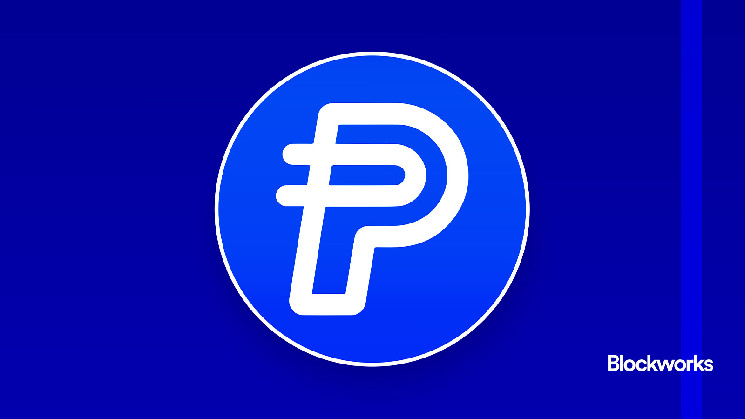PayPal’s stablecoin flows out of Solana as incentives wane
 blockworks.co 02 October 2024 20:36, UTC
blockworks.co 02 October 2024 20:36, UTC Today, enjoy the Lightspeed newsletter on Blockworks.co. Tomorrow, get the news delivered directly to your inbox. Subscribe to the Lightspeed newsletter.
Roughly a month and a half after its PYUSD supply vaulted past Ethereum’s, Solana’s stash of PayPal’s stablecoin has fallen back to Earth.
The stablecoin’s supply, once in excess of $660 million, has fallen to around $320 million, a decline of roughly 50% in about a month. Ethereum currently has a supply of $377 million PYUSD.
The drawdown comes as Kamino and other DeFi protocols slowly wind down once-lucrative liquidity incentive programs that juiced yields for the stablecoin’s holders. Now, those yield farmers appear to have gone in search of greener pastures, raising questions about how worthwhile those incentives investments will prove to be in hindsight.
PayPal’s PYUSD is issued by a firm called Paxos, which has tried to peel away liquidity from the USDT-USDC stablecoin duopoly by contracting with a firm called Trident Digital for liquidity programs. After PYUSD launched on Solana earlier this year, Trident Digital facilitated liquidity incentives programs on multiple Solana DeFi platforms, where it would temporarily raise yields in an attempt to capture liquidity.
To do so, Trident Digital would dole out funds for DeFi protocols to pass on to users as a fraction of the various platforms’ PYUSD supply, which were subject to caps, according to a person with knowledge of the matter. These caps gradually lifted over time, and yields also declined over time.
At around the peak of Solana PYUSD, $350 million in the stablecoin was earning 18% yield on Kamino. Today, the APY is at 9.24%, still nothing to sneeze at but seemingly less than some investors are willing to take. It’s unclear whether those incentives ultimately came from PayPal or the Solana Foundation’s coffers, and both organizations did not return requests for comment.
There’s a version of this story where the funds for liquidity incentives were akin to wasted funds.
“Mercenary capital sucked up the $pyUSD incentives on Solana and left,” Kilian Boshoff, chief commercial officer of Swell, wrote on X.
But at the same time, PYUSD was never meant to be primarily used for things like DeFi lending. PayPal is a payments company, and its public messaging around PYUSD has centered around the usefulness of the stablecoin for things like remittances and payments. Being able to avoid banks certainly seems useful for a company that has to deal with the fees and headaches of moving funds into and out of bank accounts around the world.
So, whether the PYUSD liquidity incentives were a worthwhile or ill-advised investment is definitely an open question, particularly given the recent supply decline. But it’s also premature to judge the deployment, which still represents a big step into Solana from one of the world’s largest fintechs.




